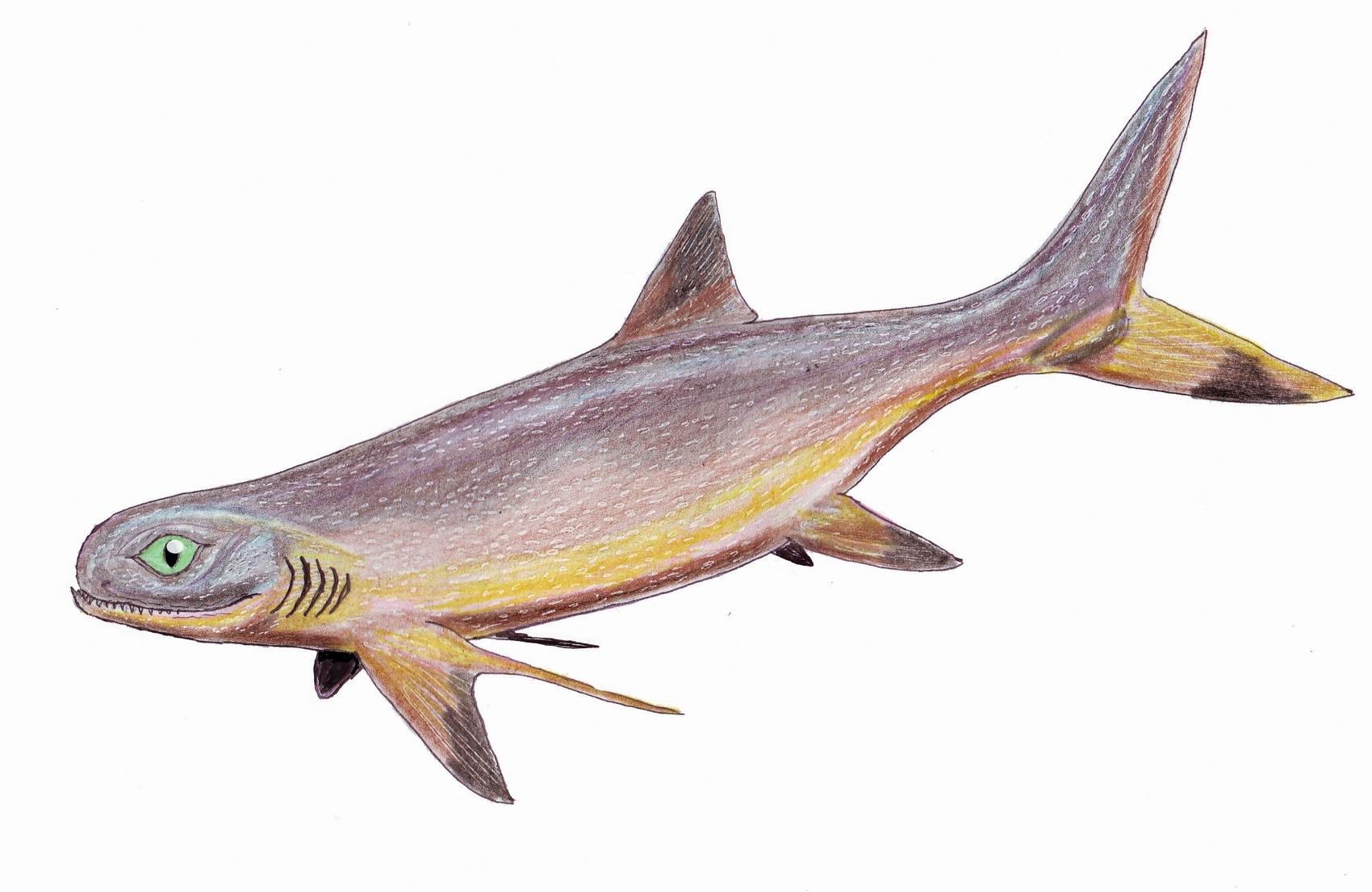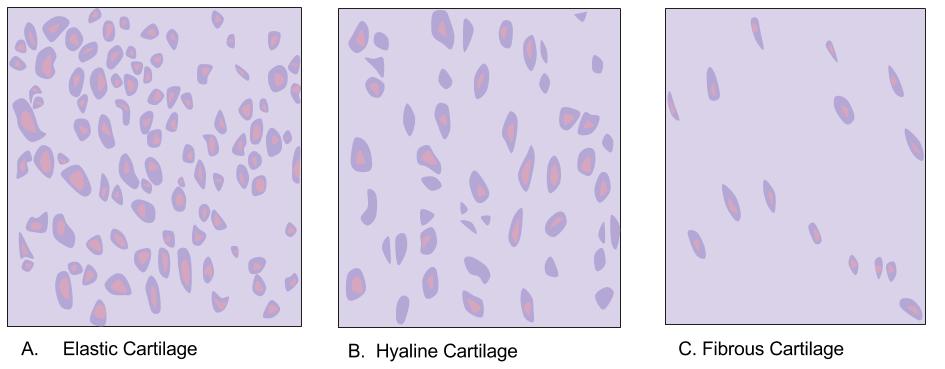|
Stethacanthus
''Stethacanthus'' is an extinct genus of shark-like holocephaliansCoates, M., Gess, R., Finarelli, J., Criswell, K., Tietjen, K. 2016. A symmoriiform chondrichthyan braincase and the origin of chimaeroid fishes. Nature. doi: 10.1038/nature20806 which lived from the Late Devonian to Late Carboniferous epoch, dying out around 298.9 million years ago. Fossils have been found in Asia, Europe and North America. Etymology ''Stethacanthus'' comes from the Greek στῆθος (''stēthos''), meaning "chest", and ἄκανθος (''akanthos''), meaning "spine" or "thorn". The name refers to the distinctive anvil-shaped first dorsal fin and spine displayed by mature males of the genus. Description ''Stethacanthus'' had different sizes depending on species, ''S. altonensis'' had length about , while ''S. productus'' reached . In many respects, it had a shark-like appearance. However, it is best known for its unusually shaped dorsal fin, which resembled an anvil or ironing board. Smal ... [...More Info...] [...Related Items...] OR: [Wikipedia] [Google] [Baidu] |
Stethacanthidae
Stethacanthidae is an extinct family of prehistoric holocephalians. It is estimated to have existed approximately between 380 and 300 million years ago. Members of this family are noted for their peculiar dorsal fin. Introduction The taxonomic history of the Family Stethacanthidae has been rather complicated because the findings of complete skeletons are very unusual, and as result early workers such as St. John & Worthen, and Newberry were unable to recognise the association of the spine, dentition teeth, and dermal denticles of these sharks. The genus ''Stethacanthus'' was established by Newberry (1889)NEWBERRY, J.S., 1889. The Paleozoic fishes of North America. ''United States Geological Survey Monograph'', 16, 340pp. for a series of large thin walled, cartilage-cored spines encountered in Mississippian (Carboniferous Period) rocks of the mid-continental United States. Decomposition of the internal cartilage and compression during burial resulted in distortion of the spines, ... [...More Info...] [...Related Items...] OR: [Wikipedia] [Google] [Baidu] |
Carboniferous
The Carboniferous ( ) is a geologic period and system of the Paleozoic that spans 60 million years from the end of the Devonian Period million years ago (Mya), to the beginning of the Permian Period, million years ago. The name ''Carboniferous'' means "coal-bearing", from the Latin '' carbō'' (" coal") and '' ferō'' ("bear, carry"), and refers to the many coal beds formed globally during that time. The first of the modern 'system' names, it was coined by geologists William Conybeare and William Phillips in 1822, based on a study of the British rock succession. The Carboniferous is often treated in North America as two geological periods, the earlier Mississippian and the later Pennsylvanian. Terrestrial animal life was well established by the Carboniferous Period. Tetrapods (four limbed vertebrates), which had originated from lobe-finned fish during the preceding Devonian, became pentadactylous in and diversified during the Carboniferous, including early amphibian lin ... [...More Info...] [...Related Items...] OR: [Wikipedia] [Google] [Baidu] |
Pectoral Fins
Fins are distinctive anatomical features composed of bony spines or rays protruding from the body of a fish. They are covered with skin and joined together either in a webbed fashion, as seen in most bony fish, or similar to a flipper, as seen in sharks. Apart from the tail or caudal fin, fish fins have no direct connection with the spine and are supported only by muscles. Their principal function is to help the fish swim. Fins located in different places on the fish serve different purposes such as moving forward, turning, keeping an upright position or stopping. Most fish use fins when swimming, flying fish use pectoral fins for gliding, and frogfish use them for crawling. Fins can also be used for other purposes; male sharks and mosquitofish use a modified fin to deliver sperm, thresher sharks use their caudal fin to stun prey, reef stonefish have spines in their dorsal fins that inject venom, anglerfish use the first spine of their dorsal fin like a fishing rod to ... [...More Info...] [...Related Items...] OR: [Wikipedia] [Google] [Baidu] |
Symmorium
''Symmorium'' is a dubious genus of extinct stethacanthid holocephalian from the Devonian and Carboniferous of the United States (Illinois) and Russia. The type species, ''Symmorium reniforme'', was named by Edward Drinker Cope in 1893 and several other species were originally classed under this genus, but they have since been classified into other genera such as ''Petalodus''. ''Symmorium'' bears close similarity in size and appearance to ''Stethacanthus ''Stethacanthus'' is an extinct genus of shark-like holocephaliansCoates, M., Gess, R., Finarelli, J., Criswell, K., Tietjen, K. 2016. A symmoriiform chondrichthyan braincase and the origin of chimaeroid fishes. Nature. doi: 10.1038/nature2080 ...'' but the former is missing the "spine and brush" on its back. Some paleontologists think that the two forms are simply the males and females of related species, while other scientists think they were distinct genera.M. Ginter, O. Hampe, and C. J. Duffin. 2010. Chondrichthyes, Pa ... [...More Info...] [...Related Items...] OR: [Wikipedia] [Google] [Baidu] |
Cladodont
This is a typical Cladodont tooth, of a Glikmanius.html" ;"title="shark called ''Glikmanius">shark called ''Glikmanius'' Cladodont (from Latin cladus, meaning branch and Greek Odon, meaning tooth) is the term for a common category of early Devonian shark known primarily for its "multi-cusped" tooth consisting of one long blade surrounded by many short, fork-like tines, designed to catch food that was swallowed whole, instead of being used to saw off chunks of meat like many modern sharks. The skinny teeth would puncture and grasp the prey, keeping it from wriggling free. Because the most common fossil evidence of cartilaginous fish is teeth, this term is also used for the fossilised teeth themselves. History The fossil tooth of '' Cladodus belifer'', which lived about 260,000,000 years ago in what would someday be Illinois. The roundness of the main tooth, and the small tines around it, show it to be a cladodont. The earliest known shark, ''Cladoselache'', was a cladodont ex ... [...More Info...] [...Related Items...] OR: [Wikipedia] [Google] [Baidu] |
Cartilage
Cartilage is a resilient and smooth type of connective tissue. In tetrapods, it covers and protects the ends of long bones at the joints as articular cartilage, and is a structural component of many body parts including the rib cage, the neck and the bronchial tubes, and the intervertebral discs. In other taxa, such as chondrichthyans, but also in cyclostomes, it may constitute a much greater proportion of the skeleton. It is not as hard and rigid as bone, but it is much stiffer and much less flexible than muscle. The matrix of cartilage is made up of glycosaminoglycans, proteoglycans, collagen fibers and, sometimes, elastin. Because of its rigidity, cartilage often serves the purpose of holding tubes open in the body. Examples include the rings of the trachea, such as the cricoid cartilage and carina. Cartilage is composed of specialized cells called chondrocytes that produce a large amount of collagenous extracellular matrix, abundant ground substance that is rich in p ... [...More Info...] [...Related Items...] OR: [Wikipedia] [Google] [Baidu] |
Scale (anatomy)
In most biological nomenclature, a scale ( grc, λεπίς, lepís; la, squāma) is a small rigid plate that grows out of an animal's skin to provide protection. In lepidopteran (butterfly and moth) species, scales are plates on the surface of the insect wing, and provide coloration. Scales are quite common and have evolved multiple times through convergent evolution, with varying structure and function. Scales are generally classified as part of an organism's integumentary system. There are various types of scales according to shape and to class of animal. Fish scales File:Ganoid scales.png, Ganoid scales on a carboniferous fish '' Amblypterus striatus'' File:Denticules cutanés du requin citron Negaprion brevirostris vus au microscope électronique à balayage.jpg, Placoid scales on a lemon shark (''Negaprion brevirostris'') File:RutilusRutilusScalesLateralLine.JPG, Cycloid scales on a common roach (''Rutilus rutilus'') Fish scales are dermally derived, specif ... [...More Info...] [...Related Items...] OR: [Wikipedia] [Google] [Baidu] |
Neurocranium
In human anatomy, the neurocranium, also known as the braincase, brainpan, or brain-pan is the upper and back part of the skull, which forms a protective case around the brain. In the human skull, the neurocranium includes the calvaria or skullcap. The remainder of the skull is the facial skeleton. In comparative anatomy, neurocranium is sometimes used synonymously with endocranium or chondrocranium. Structure The neurocranium is divided into two portions: * the membranous part, consisting of flat bones, which surround the brain; and * the cartilaginous part, or chondrocranium, which forms bones of the base of the skull. In humans, the neurocranium is usually considered to include the following eight bones: * 1 ethmoid bone * 1 frontal bone * 1 occipital bone * 2 parietal bones * 1 sphenoid bone * 2 temporal bones The ossicles (three on each side) are usually not included as bones of the neurocranium. There may variably also be extra sutural bones present. Below the ... [...More Info...] [...Related Items...] OR: [Wikipedia] [Google] [Baidu] |
Devonian
The Devonian ( ) is a geologic period and system of the Paleozoic era, spanning 60.3 million years from the end of the Silurian, million years ago (Mya), to the beginning of the Carboniferous, Mya. It is named after Devon, England, where rocks from this period were first studied. The first significant adaptive radiation of life on dry land occurred during the Devonian. Free-sporing vascular plants began to spread across dry land, forming extensive forests which covered the continents. By the middle of the Devonian, several groups of plants had evolved leaves and true roots, and by the end of the period the first seed-bearing plants appeared. The arthropod groups of myriapods, arachnids and hexapods also became well-established early in this period, after starting their expansion to land at least from the Ordovician period. Fish reached substantial diversity during this time, leading the Devonian to often be dubbed the Age of Fishes. The placoderms began domina ... [...More Info...] [...Related Items...] OR: [Wikipedia] [Google] [Baidu] |
Ratfish
Chimaeras are cartilaginous fish in the order Chimaeriformes , known informally as ghost sharks, rat fish, spookfish, or rabbit fish; the last three names are not to be confused with rattails, Opisthoproctidae, or Siganidae, respectively. At one time a "diverse and abundant" group (based on the fossil record), their closest living relatives are sharks and rays, though their last common ancestor with them lived nearly 400 million years ago. Today, they are largely confined to deep water. Description and habits Chimaeras live in temperate ocean floors down to deep, with few occurring at depths shallower than . Exceptions include the members of the genus ''Callorhinchus'', the rabbit fish and the spotted ratfish, which locally or periodically can be found at shallower depths. Consequently, these are also among the few species from the chimaera order kept in public aquaria. They live in all the oceans except for the Arctic and Antarctic oceans. They have elongated, soft b ... [...More Info...] [...Related Items...] OR: [Wikipedia] [Google] [Baidu] |


.png)


.jpg)
